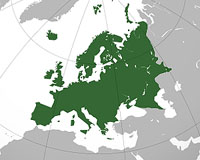 |
Hong Kong (AFP) Sept 28, 2010 Asia's developing economies should make long-term growth their top priority, the Asian Development Bank said Tuesday as it lifted its 2010 growth forecast for the region. The economies would expand by 8.2 percent in 2010, up from the bank's 7.5 percent forecast earlier this year, as the trade-driven region "recovered from the global (financial) crisis with remarkable speed and vigour," the ADB said in its twice-yearly economic forecast. Growth would slow to 7.3 percent in 2011, while inflation would remain within the central banks' "comfort zones" of an average 4.1 percent this year and 3.9 percent in 2011, the report said. "Overall, developing Asia's recovery seems to have taken a firm hold," the bank said in its Asian Development Outlook 2010 Update. "As the global crisis recedes, medium and long-term growth will reassert itself as the region's top macroeconomic priority." The latest forecast remained below the region's record 9.6 percent expansion in 2007. "Strong and sustained growth is critical for developing Asia's future prosperity," ADB chief economist Jong-Wha Lee said in a statement. "Despite its rapid pre-crisis growth and resilience during the crisis, the region lags far behind the industrial economies in per capita income and remains home to two-thirds of the world's poor." The Manila-based bank's report looked at 44 jurisdictions stretching from the former Soviet states of Central Asia to some Pacific islands, but excluded developed countries such as Japan, Australia and New Zealand. Policymakers should focus their attention on the region's shifting economies because "policies which were effective in earlier years' low-income, capital-scarce Asia are likely to be less effective in today's middle-income, capital-abundant Asia." "Promoting productivity is set to become a more influential driver of the region's growth," the report said. Trade would continue to be a major economic driver, but countries should diversify their export base and focus on inter-regional trade, it said, amid worries about a faltering economic recovery in industrialised nations. A changing labour market would require better educated workers, while urban congestion and environmental problems threatened to curb developing Asia's growth, the report said. "In order to keep Asian cities competitive, infrastructure investments must effectively tackle congestion, environmental degradation, and other costs associated with urbanisation," the report said. East Asia -- including Hong Kong, China, South Korea, and Taiwan -- is forecast to lead the region with an 8.6 percent rise in gross domestic product in 2010, up from the bank's earlier 8.3 percent forecast, the report said. Southeast Asian economies will grow by 7.4 percent in 2010, up from an earlier estimate of 5.1 percent, as countries including Thailand, Malaysia and Vietnam see an upswing in their exports, the bank said. India will lead South Asia's 7.8 percent GDP increase this year, the bank said, up from its previous 7.4 percent forecast. Central Asia, including Kazakhstan and Azerbaijan, will see 5.1 percent growth compared with the earlier 4.7 percent estimate, the bank said. Pacific island nations, including Fiji and Papua New Guinea, are expected to see their economies grow by 4.3 percent in 2010, outpacing a 3.7 percent rise forecast earlier, the report said.
Share This Article With Planet Earth
Related Links The Economy
 Walker's World: The broken contract
Walker's World: The broken contractVienna (UPI) Sep 27, 2010 Despite Britain's stubborn posture as the most euroskeptic member of the European Union, the election and the political prospects of Ed Miliband as the new leader of Britain's Labor Party are firmly rooted within the context of a broader European crisis. In France, labor unions are repeatedly bringing the country close to a halt with strikes against the government's plans to raise the r ... read more |
|
| The content herein, unless otherwise known to be public domain, are Copyright 1995-2010 - SpaceDaily. AFP and UPI Wire Stories are copyright Agence France-Presse and United Press International. ESA Portal Reports are copyright European Space Agency. All NASA sourced material is public domain. Additional copyrights may apply in whole or part to other bona fide parties. Advertising does not imply endorsement,agreement or approval of any opinions, statements or information provided by SpaceDaily on any Web page published or hosted by SpaceDaily. Privacy Statement |